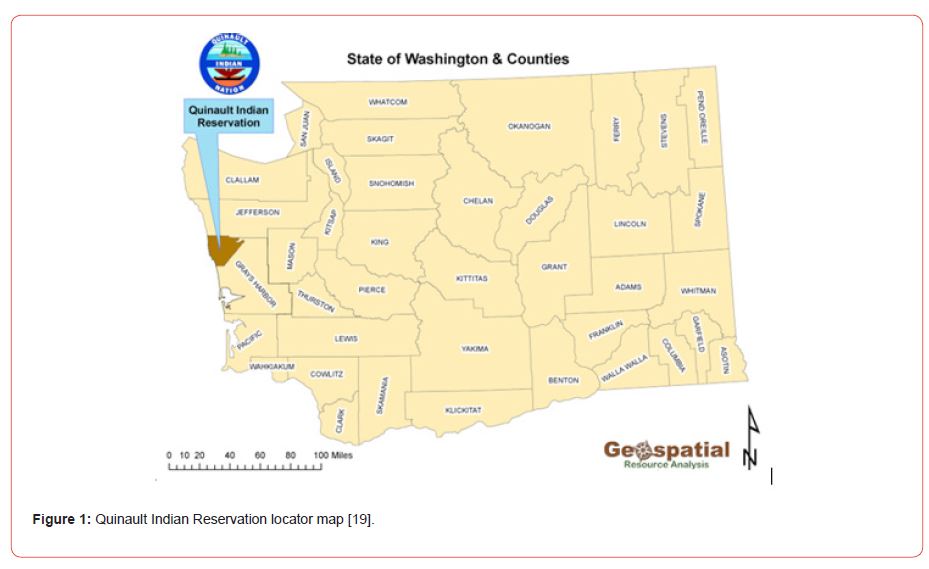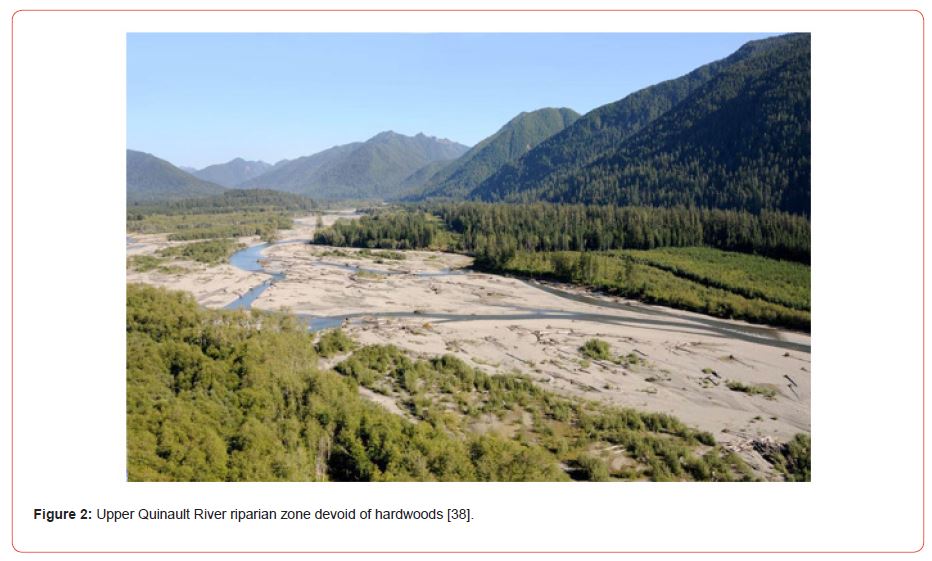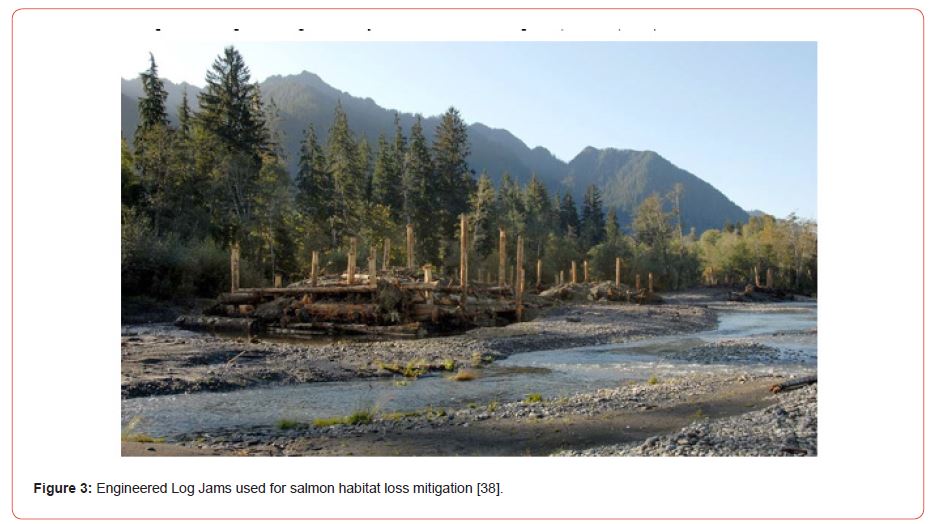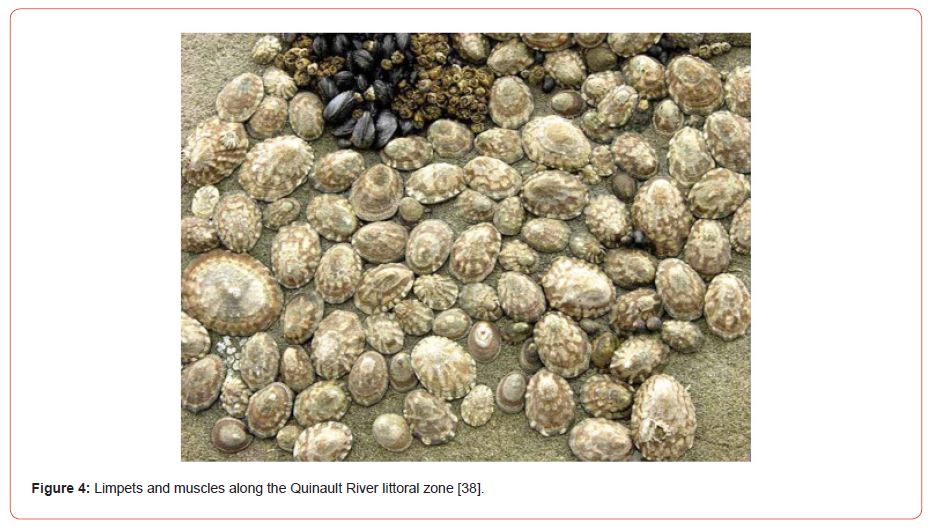 Research Article
Research Article
The Wolf Based Trophic Cascade in the Olympic Peninsula: Ecological Impacts on Salmon, Mollusks, and Beyond
William E Schlosser1* and Kathleen A Thorne2
1Environmental Scientist & Regional Planner, D&D Larix, LLC, USA
2Undergraduate student of Wildlife Ecology and Conservation Sciences, Washington State University, School of the Environment, USA
William E Schlosser, Environmental Scientist & Regional Planner, D&D Larix, LLC, USA.
Received Date: May 15, 2023; Published Date: May 31, 2023
Abstract
The Olympic Peninsula of Washington State, USA, is an ecologically diverse region that has undergone significant changes due to anthropogenic influences such as the removal of gray wolves (Canis lupus occidentalis). This trophic cascade has led to a decline in biodiversity, the loss of important habitat for aquatic species, and significant cultural impacts on indigenous tribes such as the Quinault Indian Nation (QIN). Our study explores the impact of trophic cascades on the ecosystem of the Olympic Peninsula, focusing on the effects of the removal of wolves on the Roosevelt elk (Cervus canadensis roosevelti) population and functions of riparian zones. Our findings suggest that the removal of wolves has led to an increase in elk populations, resulting in overgrazing of riparian zones, a reduction in vegetation, and loss of salmon (Oncorhynchus spp.) spawning habitat and beaver (Castor canadensis) dam pools. This, in turn, has had a cascading effect on the entire ecosystem, leading to a decline in mollusks (Class Mollusca), limpets (Order Patellogastropoda), and phytoplankton (Division Chlorophyta) populations in the Pacific Ocean. Our study highlights the critical role that wolves play in maintaining the ecological balance and the need to protect their populations. Additionally, the QIN’s efforts to mitigate the impacts of the trophic cascade through blueback salmon (Oncorhynchus nerka) harvests and habitat restoration offer valuable insights into effective conservation strategies. Our study underscores the importance of considering the broader ecological and cultural implications of human activities in managing and protecting natural ecosystems.
Keywords:Trophic cascade; Olympic Peninsula; Apex predators; Salmon; Beaver; Indigenous communities; Biodiversity Conservation; Riparian zones; Ecosystem resilience; Cultural heritage; Sustainable land management
Abbreviations: Engineered Log Jams (ELJ); National Environmental Policy Act (NEPA); Quinault Indian Nation (QIN); US Bureau of Reclamation (BOR)
Introduction
The Olympic Peninsula is home to a diverse array of flora and fauna, including black-tailed deer (Odocoileus hemionus columbianus), Roosevelt elk, and Pacific salmon [1]. The Olympic Peninsula was also once home to gray wolves, but they were systematically exterminated during the mid 1900s as part of a predator control program initiated by USA President Roosevelt’s administration [2]. The removal of wolves has had far-reaching consequences, including a top-down trophic cascade that has affected multiple ecosystem components [3, 4].
The removal of wolves led to an increase in the elk population, which subsequently resulted in overgrazing and browsing of vegetation. This overgrazing and browsing negatively impacted the black-tailed deer population, which depends on vegetation for food and habitat [5]. Furthermore, the lack of predators like wolves has led to changes in river morphology and a reduction in the population of beavers, which create dams that provide essential habitat for a variety of aquatic organisms, including Pacific salmon [6].
These changes have resulted in a cascade of effects on the ecosystem, including a decline in the abundance of salmon and other species [7, 8]. The QIN has been working with county, state, tribal, and federal agencies, along with private landowners, to stop the loss of salmon spawning habitat and prevent the overgrazing of riparian zones by elk [9]. In addition, researchers have found that the reintroduction of wolves to Yellowstone National Park has led to a restoration of ecosystem processes and an increase in biodiversity [10]. Finally, McLellan [11] found that the recovery of black-tailed deer populations is linked to the restoration of their habitats, including riparian zones.
The loss of beaver dams has resulted in a reduction of nitrogen delivery to the Pacific Ocean via the many regional rivers, including the Quinault River [12], which has cascading effects on riverine ecosystems and the health of the oceanic ecosystem, as nitrogen is a vital nutrient for primary producers like phytoplankton [13]. The decline in phytoplankton abundance and biomass has also negatively impacted the organisms that rely on them for food, such as mollusks, limpets, and other species in the littoral zone [14]. Therefore, it is crucial to understand the far-reaching effects of trophic cascades and the importance of maintaining a natural balance in ecosystems for the health of all organisms involved [15].
Study design
Trophic cascades, encompassing the transfer of energy and nutrients across different trophic levels of an ecosystem, underpin the intricate ecological interactions on the Olympic Peninsula. Removal of the apex predator, wolves, triggered a trophic cascade, leading to a surge in elk populations and their herbivory in riparian areas, thereby exerting a negative influence on the river ecosystem. Overgrazing resulted in the loss of vegetation, amplifying river channel erosion and sedimentation downstream, disrupting the flow dynamics, and diminishing nutrient availability. Consequently, this ecological upheaval culminated in the decline of primary consumers, such as beavers, which played a pivotal role in ecosystem engineering through the construction of dams that fostered the creation of vital riverine habitats.
Data collection
We examined the effects of the trophic cascade on elk browsing in the riparian zones, loss of salmon spawning habitat, loss of beaver dam pools, and reduction of nutrients in the water course. We also investigated the effects of the trophic cascade on the littoral zone of the Quinault River, including impacts on mollusks, limpets, and phytoplankton. These species serve as important prey for a variety of fish, such as surf smelt, sand lance, and some species of sculpin, which are in turn preyed upon by larger predators like salmon and steelhead.

To understand its impacts on the indigenous population of the region, we integrated data from the QIN (Figure 1) into our study. The western side of the Olympic Peninsula is home to four Indian tribes, including the Quinault, Hoh, Makah, and Quileute tribes. We examined the efforts of the Northwest Indian Fisheries Commission to mitigate the effects of the trophic cascade, including their work with county, state, federal, and tribal agencies, and private landowners to protect salmon populations within the Quinault River (Figure 1).
Data analysis
It is estimated that prior to the removal of wolves there were approximately 5,000 Roosevelt elk in the Olympic National Park [16]. Today, the population has grown to over 8,000 individuals, leading to significant changes in the ecosystem [17, 18].
The increase in primary consumer populations, such as deer and elk, led to overgrazing (Figure 2) mainly concentrated in riparian zones of the Quinault River [19, 20], negatively impacting river ecosystems. In the context of trophic cascades, the presence or absence of wolves in an ecosystem can significantly influence the behavior of elk and deer, particularly in riparian zones. Research has shown that when wolves are present, elk and deer alter their behavior to avoid predation. The sound of flowing rivers masks the approach of wolf packs, leading these ungulates to avoid spending time along the rivers, including bedding down on warm rocks. Beschta, Ripple, and Fortin [4] observed that in the presence of wolves, elk exhibited a tendency to avoid riparian areas altogether. However, in the absence of wolves, elk and deer can utilize the riparian zone, resulting in the consumption of hardwood leaves from cottonwood (Populus spp.), western red alder (Alnus rubra), willow (Salix spp.), and other species. This finding is supported by Ripple et al. [21], who documented the significant impact of ungulate browsing on riparian vegetation in the absence of wolf predation. Consequently, the removal of wolves from the ecosystem has led to a pronounced trophic cascade, as the uninterrupted grazing by elk and deer on riparian vegetation has disrupted the balance of the ecosystem.

The removal of wolves and subsequent increase of elk herbivory has led to the loss of vegetative components that previously held the river path in place, resulting in increased erosion and decreased nutrient quality [22]. This, in combination with the creation of new stream paths during spring freshets, has left salmon redds without water and led to a decline in salmon populations (Figure 2).
Furthermore, the destruction of beaver dam locations has negatively impacted the ecosystem. The abiotic factors, combined with the trophic cascade caused by wolf removal, highlight the complex nature of ecological systems and the importance of considering all components in conservation and management efforts. With fewer primary producers, there is less nitrogen availability in the soil for plants to create chloroplasts, leading to decreased photosynthetic activity [23] and fewer beaver dam-puts [8, 24]. Without stable plant growth, established riparian large woody vegetation sustaining river shorelines, more sediment and debris is carried by rivers changing the water velocity and aquatic life [7, 25].
Results
In response to the declining population of blueback salmon [26], the QIN initiated a targeted Upper Quinault River restoration project that required a National Environmental Policy Act (NEPA) assessment. The US Bureau of Reclamation (BOR) conducted a river ecosystem analysis [27] and applied the concept of Engineered Log Jams (ELJ) within the Upper Quinault River (Figure 3) to help restore the river’s interactivity.

Historically, large conifer trees along shorelines provided anchor points for stream placement stability, preventing erosion and maintaining salmon spawning locations. However, because of the large tree harvests at the turn of the 20th Century, the Upper Quinault River’s channel lacked these anchor points, leading to increased velocity and erosion during the rainy season, creating new stream segments and leaving previous channel paths abandoned. As a result, salmon spawning locations were left without river water, and redds were vacated. To prevent further damage, the ELJ placements (Figure 3) were strategically designed to replace the large woody debris component and trees that were historically located in the river channel, acting as a stop-gap apparatus to limit river channel rerouting (Figure 3).
The NEPA compliance data analysis [19] was initiated by the QIN as a 20-year NEPA compliance assessment. The trophic cascade effects became evident and short-term actions were required to recover keystone species such as the blueback salmon.
Even with such a long-lasting impact, the trophic cascade effects did not stop here. The loss of salmon spawning habitat also led to a decline in nutrient cycling in the ecosystem [28]. This loss in nutrient cycling further negatively impacted other species in the ecosystem, such as mollusks like mussels (Mytilus spp.) (Figure 4), and Pacific razor clam (Siliqua patula), both of which belong to the class Mollusca, as well as phytoplankton [5, 29] (Figure 4).
These impacts were particularly significant for the QIN, who rely on salmon, razor clams, and associated aquatic wildlife as an important food source and culturally significant feature [30, 31]. The loss of salmon populations in the Quinault River had a significant impact on the tribe’s culture and economy, leading to efforts by the QIN to mitigate the impacts of the trophic cascade. The QIN has worked with tribal, state, and federal agencies and private landowners to protect salmon populations in the Quinault River by using ELJs and providing habitat for aquatic species.
Overall, the results of the study suggest that the trophic cascade resulting from the removal of wolves had significant ecological and socio-economic impacts. The QIN’s efforts to mitigate these impacts highlight the importance of indigenous knowledge and involvement in conservation efforts.
Conservation and management implications
The findings of this study have important implications for conservation and management efforts in the Olympic Peninsula. Understanding the complex interactions and ecological dynamics shaped by factors such as timber harvesting, wolf removal, and riparian zone overgrazing by native ungulates is crucial for formulating effective strategies to restore and safeguard these processes.
One key approach is the implementation of habitat restoration initiatives, such as the use of ELJs in the Upper Quinault River. These structures mimic the function of large woody debris and trees historically present in the river channel, providing anchor points for stability, reducing erosion, and preserving salmon spawning locations. The success of such restoration efforts relies on the integration of scientific research, indigenous knowledge, and collaboration among various stakeholders, including tribal, state, federal, and private entities.

Conservation and management efforts should also prioritize the protection and restoration of beaver populations and their habitats. Beaver dams play a critical role in nutrient cycling, water retention, and habitat creation, benefiting a wide range of species in the ecosystem. Restoring beaver populations can help reestablish these vital ecological functions and contribute to the overall resilience and health of the riverine and littoral zones.
The consequences of overgrazing in riparian zones and subsequent river rerouting are multifaceted [32], particularly regarding the loss of beaver dam put locations and the associated nutrient capture. These beaver dam pools were vital for nutrient cycling, providing a niche for insect habitat and attracting a diversity of bird and marine interactions. The translocation of nutrients downstream, consisting of decaying salmon bodies, nutrient-rich beaver dam pools, and decomposed leaves and branches, served as a vital resource for the recipients in the littoral zone. Unfortunately, the alteration of riparian zones and the absence of beaver dams have left the river’s platter empty, disrupting nutrient translocation.
Anthropogenic Amplification
It is essential to engage and involve indigenous communities, such as the QIN, in conservation efforts. Indigenous knowledge and practices have long recognized the interconnectedness of ecosystems and the importance of sustainable resource management. Collaborative approaches that respect and integrate traditional ecological knowledge can enhance the effectiveness of conservation initiatives and ensure the preservation of cultural and ecological heritage.
Human activities such as timber harvesting, dam construction, and land use changes have disrupted nutrient translocation, leading to significant implications for the entire ecosystem of the Olympic Peninsula. This disruption deprives littoral zone recipients, including mollusks, sea otters (Enhydra lutris), and whales (Orcinus spp.), of essential food resources. These complex ecological relationships between riparian zones, river dynamics, and nutrient cycling underscore the need for comprehensive conservation and management efforts to restore and safeguard these crucial processes.
The removal of wolves, coupled with anthropogenic activities, has induced substantial ecological transformations on the Olympic Peninsula [32]. The ramifications of the trophic cascade extend beyond the river ecosystem to the littoral zone and open ocean. For instance, the decline in salmon populations due to the loss of spawning habitats can impact other species reliant on salmon, such as black bears (Ursus americanus) and eagles (Haliaeetus spp.). Similarly, the decline in upstream beaver populations [33] can hamper the availability of oceanic habitats for other species, including sea otters (Enhydra lutris) and Orca (Orcinus orca). Thus, an in-depth understanding of the intricate trophic cascades is indispensable for the formulation and implementation of effective conservation and management strategies.
This comprehensive study design unravels the complexities surrounding trophic cascades and their consequences on the Olympic Peninsula. By delving into the historical and ecological dynamics shaped by timber harvesting, wolf removal, and riparian zone overgrazing, we can illuminate the path toward restoring equilibrium, fortifying the resilience of the river ecosystem, and ensuring the perpetuation of the remarkable biodiversity that thrives within this unique and awe-inspiring landscape. Through meticulous research and strategic conservation efforts, we can forge a future where the trophic interactions of the Olympic Peninsula are restored, allowing the rivers to flow harmoniously, the beavers to engineer their remarkable habitats, and the vital nutrients to nourish the intricate web of life from the riparian zones to the vast ocean beyond. By recognizing the interconnectedness of these ecological processes and embracing our role as stewards of this remarkable ecosystem, we can pave the way for a sustainable and thriving future for the Olympic Peninsula and all its enigmatic inhabitants.
Discussion
Impacts of the trophic cascade
The findings of our study shed light on the extensive impacts of the trophic cascade on the Olympic Peninsula, extending beyond the immediate effects on the near-river-ecosystem. The removal of wolves, as the apex predator, triggered a series of ecological changes that reverberated throughout the landscape. One notable effect was the increase in elk populations and their overgrazing in riparian areas, leading to vegetation loss and subsequent erosion of river channels. This not only altered the physical structure of the rivers but also disrupted the intricate balance of nutrient cycling and habitat creation.
The decline in salmon populations due to the loss of spawning habitats has ripple effects on other species reliant on salmon as a food source. Predators such as black bears and eagles that depend on salmon for sustenance may experience reduced prey availability and potentially alter their foraging behaviors or migration patterns [2, 4]. The decline in beaver populations exacerbated the ecological consequences of the trophic cascade. Beavers, as ecosystem engineers, play a crucial role in building dams that create pools of water, enhancing water retention, and fostering nutrient-rich habitats. The loss of beaver dams not only reduced the availability of suitable habitat for a variety of species but also hindered the downstream translocation of essential nutrients.
In addition to the direct ecological impacts, the trophic cascade also has indirect effects on other species and their interactions. For example, the decline in salmon populations due to the loss of spawning habitats not only affects bears and eagles but also has implications for other species, such as the golden eagles (Aquila chrysaetos) that rely on salmon as a food source. The intricate web of trophic interactions and dependencies demonstrates the far-reaching consequences of disrupting the natural balance within an ecosystem.
When decaying salmon bodies are released in rivers, they contribute valuable nutrients that support the ecosystem. The decomposition of salmon carcasses releases nitrogen, an essential nutrient for the growth and development of organisms [34]. Nitrogen derived from decaying salmon serves as a crucial resource for mollusks, limpets, and razor clams, supporting their physiological processes and overall productivity [35]. Additionally, the decaying salmon bodies also release phosphorus into the surrounding water, which is vital for energy transfer and growth in aquatic organisms [36]. Phosphorus availability from decaying salmon contributes to the nutrient requirements of mollusks, limpets, and razor clams, enabling their thriving populations in the ecosystem. Furthermore, the decomposition process releases carbon, an elemental component of life that is utilized by various organisms in their metabolic processes [35]. Mollusks, limpets, and razor clams benefit from the carbon derived from decaying salmon, supporting their physiological functions and ecological roles. The input of these essential nutrients through decaying salmon bodies plays a vital role in sustaining the productivity and biodiversity of the Quinault River and the Pacific Ocean interface ecosystem.
The far-reaching consequences of the trophic cascade highlight the interconnectedness of ecological processes and the need for comprehensive conservation and management strategies. Efforts to restore and protect key components of the ecosystem, such as salmon spawning habitats and beaver dam pools, are essential for maintaining the balance and health of the Olympic Peninsula’s ecosystems.
Sustainable resource management and indigenous collaboration
Our study underscores the importance of adopting sustainable management practices to restore and preserve the ecological integrity of the Olympic Peninsula. Reinstating apex predators like wolves can help regulate prey populations, restore natural trophic interactions, and mitigate the impacts of overgrazing. Similarly, promoting the recovery of beaver populations through habitat restoration initiatives can enhance ecosystem resilience and nutrient cycling.
By recognizing the value of indigenous knowledge and incorporating it into conservation strategies, we can harness the collective wisdom of different stakeholders to achieve sustainable resource management goals. This approach not only respects and preserves cultural heritage but also enhances ecological outcomes by integrating traditional ecological knowledge with scientific insights.
Future directions and conservation imperative
While our study provides valuable insights into the impacts of the trophic cascade on the Olympic Peninsula, there are still many avenues for future research and conservation efforts. Continued monitoring of ecosystem dynamics, including the recovery of apex predators, the restoration of beaver populations, and the response of the river ecosystem, will be essential for understanding longterm trends and informing adaptive management strategies.
Furthermore, expanding our understanding of the broader ecological consequences of the trophic cascade is crucial. Exploring additional species interactions and their responses to ecosystem changes can provide a more comprehensive picture of the intricate web of life on the Olympic Peninsula. Understanding the ecological resilience and thresholds of the ecosystem will guide conservation actions aimed at restoring and preserving its biodiversity and functionality.
Our study highlights the significant impacts of the trophic cascade on the Olympic Peninsula and emphasizes the need for sustainable resource management practices. By reinstating apex predators, promoting the recovery of beaver populations, and collaborating with indigenous communities, we can work towards mitigating the ecological disruptions caused by the trophic cascade. This requires a holistic approach that considers the intricate connections between species, habitats, and ecological processes.
Conservation efforts should not be limited to individual species or isolated areas but should encompass the entire ecosystem. Implementing landscape-scale conservation strategies that address the root causes of the trophic cascade, such as habitat loss, overgrazing, and disruption of natural processes, is essential for longterm ecological sustainability.
Additionally, it is crucial to engage and educate local communities, landowners, and stakeholders about the importance of preserving and restoring ecosystem integrity. By fostering a sense of stewardship and promoting sustainable land use practices, we can create a collective commitment to conserving the unique ecological heritage of the Olympic Peninsula.
Furthermore, incorporating traditional ecological knowledge into management plans can enhance the effectiveness and cultural relevance of conservation efforts. Indigenous communities possess invaluable knowledge about the land, its resources, and sustainable practices that have been honed over generations. Collaborative partnerships between scientists, indigenous communities, and other stakeholders can facilitate the exchange of knowledge and expertise, leading to more holistic and culturally appropriate conservation approaches.
Conclusion
In conclusion, our study sheds light on the extensive impacts of the trophic cascade on the Olympic Peninsula and emphasizes the urgent need for comprehensive conservation measures. By reinstating apex predators, restoring beaver populations, adopting sustainable land management practices, and fostering collaboration with indigenous communities, we can work towards restoring ecological balance and preserving the unique biodiversity and cultural heritage of this remarkable ecosystem. Only through such concerted efforts can we ensure the long-term health and resilience of the Olympic Peninsula for generations to come.
Furthermore, the trophic cascade has not only had ecological consequences but has also significantly affected the social and cultural fabric of the indigenous tribes residing in the Olympic Peninsula. Salmon, razor clams, and other aquatic species hold immense importance as sources of sustenance and are deeply intertwined with the cultural identity of many tribes in the region. The loss of these species due to the trophic cascade, compounded by historical excessive timber harvest practices [37], has had devastating effects on these communities, necessitating immediate action to mitigate the impacts.
The QIN and other tribes in the region have taken a proactive approach to protect salmon populations and other culturally significant species. Their efforts include restoring beaver dam pools and spawning habitats and reducing overgrazing in riparian zones by herbivores. Through collaboration with state and federal agencies, as well as private landowners, indigenous communities have played a vital role in mitigating the effects of the trophic cascade and safeguarding the ecosystem’s health. These endeavors not only preserve cultural traditions and ways of life but also uphold the ecological diversity and well-being of the Olympic Peninsula for future generations.
The significance of biodiversity cannot be overstated, as the decline in species richness has far-reaching consequences, impacting not only the species directly involved in ecological processes but also cascading throughout other trophic levels and abiotic components within the ecosystem. This underscores the critical importance of maintaining biodiversity to ensure the stability and sustainability of ecosystems. Recognizing and addressing the interconnectedness of ecological processes is paramount in promoting ecosystem health and balance.
In summary, our study highlights the need for immediate and collaborative action to restore the trophic structure, ecological dynamics, and cultural integrity of the Olympic Peninsula. By addressing the impacts of the trophic cascade, we can safeguard the rich biodiversity, preserve cultural heritage, and promote the resilience of this unique ecosystem. The lessons learned from the Olympic Peninsula have broader implications for conservation and management efforts in other regions facing similar challenges. Protecting and restoring ecological processes and embracing the wisdom of indigenous communities are vital steps towards a sustainable future for our planet [38].
Acknowledgements
As the lead author, I would like to express my sincere gratitude to Larry Workman for his invaluable contribution to this manuscript. As an employee of the QIN, his expertise in ecology, trophic cascades, geology, and wildlife management was instrumental in shaping the ideas presented in this work. Additionally, his stunning photographs provided visual insight into the beauty and complexity of the Olympic Peninsula’s ecosystem. Larry’s wise and insightful words will forever be appreciated.
Conflict of Interest
There are no conflicts of interest involving this article.
References
-
William E Schlosser* and Kathleen A Thorne. The Wolf Based Trophic Cascade in the Olympic Peninsula: Ecological Impacts on Salmon, Mollusks, and Beyond. Online J Ecol Environ Sci. 1(1): 2023. OJEES.MS.ID.000504.
-
Biodiversity, Ecological and cultural implications, Olympic peninsula, Consumer populations, Ecological systems, Salmon populations, Ecosystem, Trophic cascades, Geology, Cultural heritage.
-

This work is licensed under a Creative Commons Attribution-NonCommercial 4.0 International License.






